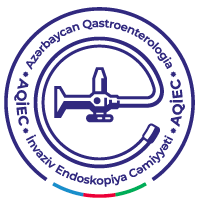ABSTRACT
A 31-year-old male presented with a history of vitiligo and extensive ulcerative colitis who developed relapsing polychondritis (RPC) manifesting as bilateral auricular chondritis, nasal chondritis, and polyarthritis. Despite the initial antibiotic treatment, the patient’s symptoms persisted and worsened, necessitating the initiation of prednisolone therapy, which led to complete resolution of the chondritis and arthritis symptoms within 2 weeks. This case underscores the importance of considering RPC in patients with inflammatory bowel disease presenting with unexplained inflammatory symptoms involving cartilaginous structures.
INTRODUCTION
Inflammatory bowel diseases (IBD), including Ulcerative Colitis and Crohn’s disease, are chronic inflammatory conditions of the gastrointestinal system with an autoimmune etiology. These diseases are often associated with extraintestinal manifestations, including arthritis, chondritis, and other autoinflammatory pathologies [1]. Arthritis is one of the most common extraintestinal manifestations of IBD, affecting both peripheral and axial joints. The coexistence of IBD with these autoinflammatory conditions suggests a shared pathophysiological mechanism, likely involving the dysregulation of the immune system [1]. Early recognition and appropriate management of these extraintestinal manifestations are crucial for improving patient outcomes and quality of life. In this article, we present a rare case of an uncommon extraintestinal manifestation.
CASE PRESENTATION
A 31-year-old man with known vitiligo and extensive ulcerative colitis (UC) was admitted with bloody mucus containing diarrhea 6-8 times per day and erythema in the left auricle (Figure 1A). The patient had been followed up for UC for 3 years and was receiving oral and local mesalamine therapy at the time of presentation. Antibiotics were started because they were thought to be of infectious origin. The complaints of the patient did not regress; redness in the right auricle and nose saddle, signs of arthritis in the bilateral ankle joint (Figure 1B), and edema in the lower extremities progressed during the next 20 days. According to the Rachmilevitz endoscopic activity index, the score was 10, indicating severe disease.
Laboratory tests revealed anemia (hemoglobin: 10.7 mg/dL), thrombocytosis (550 x109/L), and elevated acute-phase reactants (C-reactive protein: 27 mg/L, erythrocyte sedimentation rate: 34 mm/hr). No serological positivity associated with arthritis was detected in the serological tests sent. The patient’s history did not include any autoimmune diseases other than vitiligo. No findings suggesting vasculitis or Behçet’s disease was found in the examinations performed. Physical examination due to edema in the lower extremities revealed no pitting edema, and the lower extremity pulses were palpable. Doppler ultrasound of the lower extremities revealed no evidence of venous or arterial thrombosis. It was determined that the patient met 3 of the following McAdam et al. [2] criteria: bilateral auricular chondritis, non-erosive seronegative polyarthritis, nasal chondritis. In the foreground, relapsing polychondritis (RPC) was considered, and prednisolone treatment at 40 mg was started in patients who also had active UC. In the second week of treatment, the symptoms of chondritis and arthritis were completely resolved.
DISCUSSION
Chondritis, particularly in the form of RPC, is a rare but significant complication involving recurrent inflammation of cartilaginous structures, such as the ears, nose, and respiratory tract. RPC is an immune-mediated condition characterized by repeated episodes of inflammation and cartilage deterioration. Damage to the cartilage can produce collagen shards, which can result in the production of circulating immune complexes and induce RP. This condition is a rare disease with a frequency of approximately 4.5 per million [3]. RPC is diagnosed based on the McAdam et al. [2] criteria, which require the presence of three or more of the following features: (1) recurrent chondritis of both auricles, (2) non-erosive inflammatory polyarthritis, (3) chondritis of the nasal cartilage, (4) ocular inflammation, including conjunctivitis, keratitis, scleritis, or uveitis, (5) respiratory tract chondritis involving the laryngeal or tracheal cartilage, and (6) audiovestibular damage, such as hearing loss, vertigo, or tinnitus. Auricular involvement is the most common feature, but other organs may be included, like costal cartilage, airways, eyes, nose, heart, vascular system, and joints, may also be involved. Gastrointestinal findings are infrequent, and there have been sporadic reports of coexisting IBD [4]. The primary treatment for RPC is corticosteroid therapy with prednisolone to decrease the severity, frequency, and duration of relapse. Other medications reported to control symptoms include dapsone, methotrexate, azathioprine, and immunosuppressive drugs, and biological agents may be required for severe forms [5]. We have been following a rare case of RPC and UK coexistence in remission for 24 months after steroid and anti-tumor necrosis factor therapy.
This case underscores the importance of considering RPC in patients with IBD who present with unexplained inflammatory symptoms involving cartilaginous structures. Early recognition and treatment are crucial for preventing complications and improving patient outcomes.



